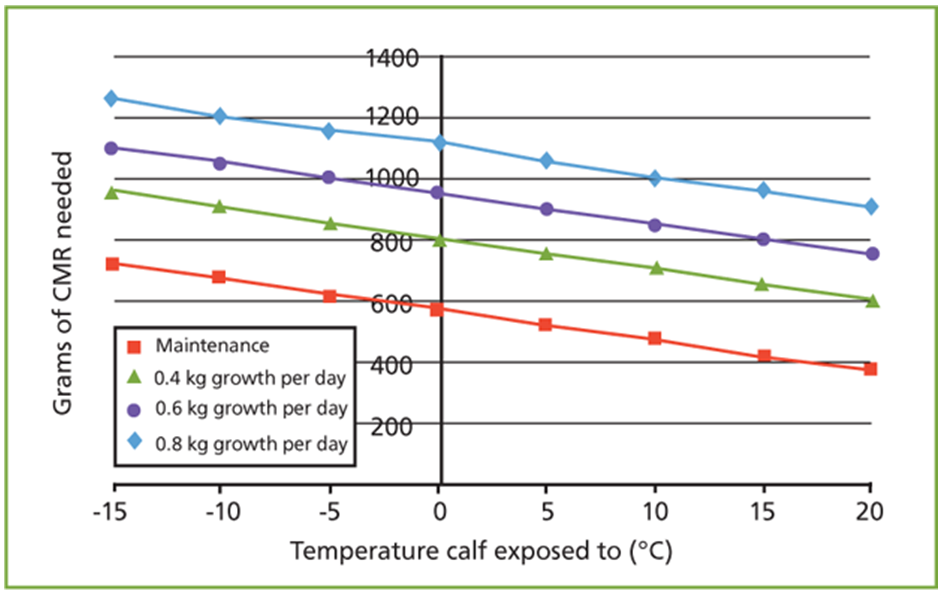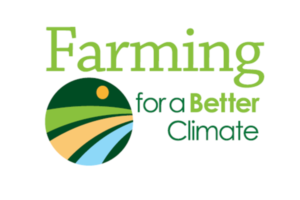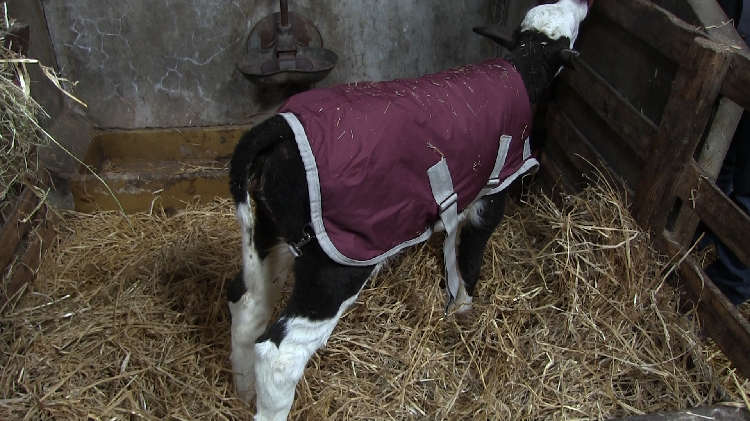Keeping Calves Productive and Healthy in Cold Conditions
30 November 2019With winter approaching now is the time to consider the thermal needs of your calves.
A calf less than three weeks old has a lower critical temperature between 10 to 15°C and colder temperatures have a marked effect on energy requirements for maintenance, leading to lower growth rates and increased susceptibility to disease.
It is good practice to increase intakes of milk replacer during the winter, either by increasing the volume fed or concentration from 12.5% to 15% inclusion. Aim to feed at least 1kg of milk powder when the temperature is below 10°C to achieve the target 0.8kg growth/day for Holstein-Frisian calves (see figure below). This will also help support the immune system and benefit future milk production.
Milk replacer (20MJ/kg DM) required to support different growth rates in a 45kg calf under three weeks of age.

From Cooper, R and Watson, I (2013) ‘A guide to feeding and assessment of calf milk replacer’. Livestock, 18(6), pp 216-222
Research by Cornell University showed that calves born in the winter produced 545kg less milk in their first lactation compared to summer-born calves. Also, for every 1kg of daily live weight gain pre-weaning, an additional 850kg more milk was produced in the first lactation.
Jackets are a great way to keep calves warm, meaning more energy is used for growth and to fight infection. Calves under one month of age will benefit the most. New-born calves do not have adequate fat reserves to help regulate body temperature and their high surface area to body size means they lose heat quickly in cold temperatures. Tips for using calf jackets:
- Make sure the calves’ coats are completely dry before fitting a jacket.

- Ensure the straps do not rub and adjust for growth as calves get bigger.
- Between calves, disinfect jackets with a licensed product for cryptosporidium, then wash at 60˚C to kill cryptosporidium eggs.
- If jackets become wet, change them so the calf does not chill. Also ensure calves are not sweating under their jackets, again leading to chilling at night-time. Remove during the day if sweating, then replace at night.
- Remove jackets in the morning and not later in the day.
For more farm efficiency ideas and to read how other farmers are improving livestock productivity, visit Farming For a Better Climate.
Lorna MacPherson for Scotland’s Farm Advisory Service
This Farming For a Better Climate article was published in Farming Scotland Magazine and funded by the Scottish Government as part of Scotland’s Farm Advisory Service.
Sign up to the FAS newsletter
Receive updates on news, events and publications from Scotland’s Farm Advisory Service


